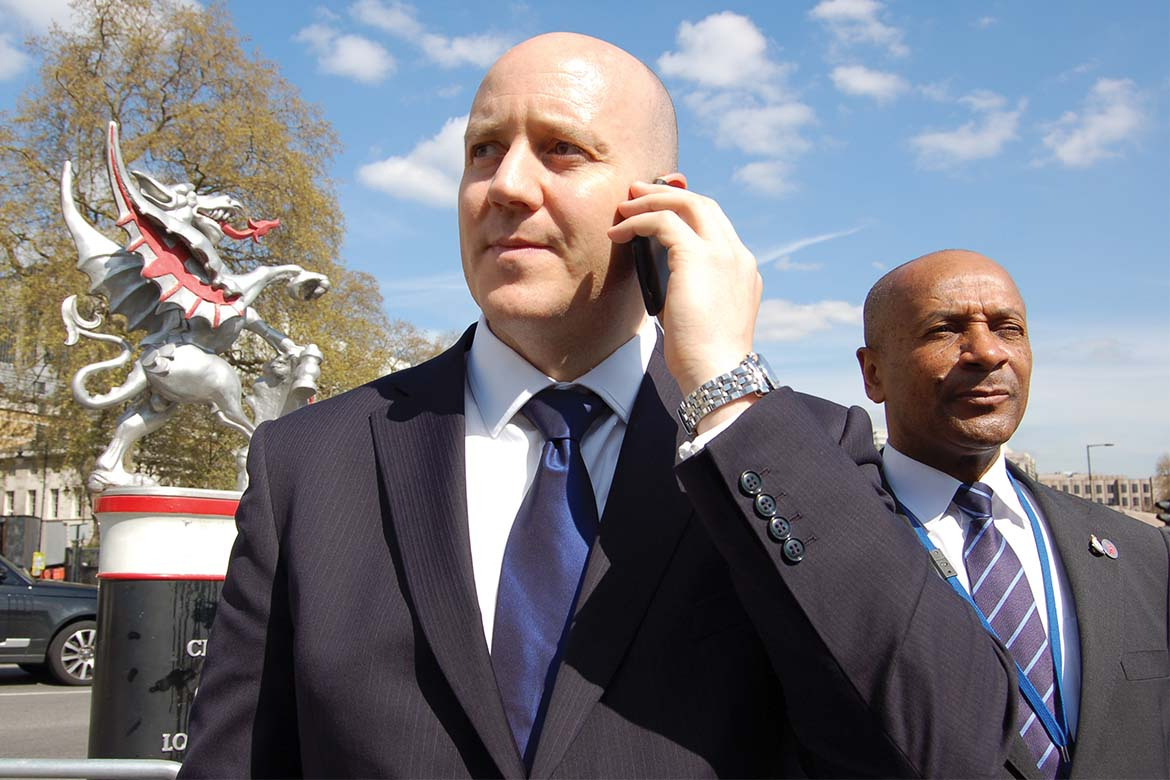Modernisation improves customer service – a win-win for all parties
Guarding is all about people
When going out to tender for a guarding contract, fundamentally, what you require are reliable, predictable and appropriately skilled officers at the specified locations within your operation, just like the ones shown above.
The guards are often the front-line representation of your business and your brand. As I come through the door into your foyer, it is a guard from your chosen security contractor that greets me and processes me into your building. A first impression is made.
Commoditised guarding
It’s probably no surprise that guarding provision is becoming increasingly commoditised, with clients demanding lower prices and providers looking to sew up the contract in order to get years of guaranteed work and revenue. Margins are small which in turn drives down wages, recruitment spending and training. It’s inevitable that a negative impact on customer service and quality will follow. In this scenario, nobody wins. It’s a true race to the bottom with the providers being given no option but to provide sub-par resource which in turn means that mistakes are made, both from a customer experience perspective but also in terms of mitigation of risk.
If the staff guarding your building have been minimally trained and are poorly incentivised to provide a quality service, both businesses will suffer.
Of course, it’s within the tenderer’s jurisdiction to be realistic with price; to look beyond guarding as a commodity and instead see it as part of the picture of the front line of your business. If the Head of Procurement for your latest tender is met by a dispirited officer on the turnstiles, how will that impact your day?
As a provider of guarding there are ways to improve your delivery quality without adding to the cost to deliver.
Improving delivery of guarding
A number of technologies in the market place have been proven to be effective in similar, related industries such as Facilities Management which can actively predict resourcing requirements based on forecast demand. This means the management of the rotas is simplified, reducing time spent in management administration.
The shift allocation is optimised to ensure working time directives and contractual agreements are met, shift allocation is fair and the resources have better control over swaps and leave. This has a number of benefits – the right number of staff is assigned shifts to meet the demand, taking into account skills and certifications.
Guards have better visibility of their rotas and can request swaps where desired which, once approved by management, result in the automatic reallocation of shifts.
Pair this with a simple, low cost, real-time threaded text messaging service that allows you to quickly ‘auction’ shifts when guards unexpectedly don’t arrive for work, causing shifts to be reallocated dynamically with full audit for payroll and regulatory compliance. A business process is then in place that reduces the cost to deliver the contract but with better served employees and ultimately a better served customer. With this kind of technology in place it becomes trivial to provide reports demonstrating KPIs on service levels, which helps with service reviews and contractual discussions. The guarding provider is also now afforded visibility of how the workforce is performing, and can determine an accurate cost to serve and make changes based on real information about how the operation can be improved.
These technologies and processes have been proven to work in many industries where the principal corporate asset is people – Facilities Management, Water and Energy Utilities, Oil & Gas, Leisure and Retail.
Happier employees equates to improved customer service. A win-win for all involved and maybe the Head of Procurement enters your office with a smile on her face rather than a uttering a moan about her experience in the foyer. It’s time that guarding embraced new technologies in order to modernise and change the industry for the better, for all concerned.
Ross Coundon
CTO, Leadent Solutions


